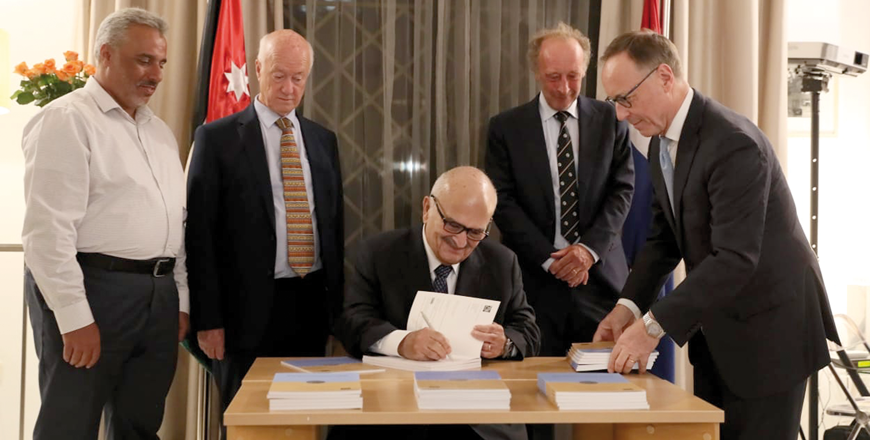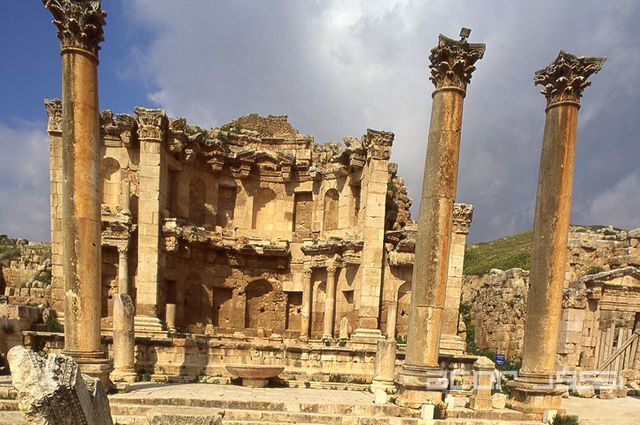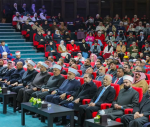You are here
Prince Hassan attends ‘Frontiers of the Roman Empire’ book launch
By Saeb Rawashdeh - Sep 29,2022 - Last updated at Sep 29,2022

AMMAN — HRH Prince Hassan on Wednesday attended the book launch of “Frontiers of the Roman Empire”, which was prepared by a group of Arab and non-Arab researchers and archaeologists with the support of the Dutch embassy in Jordan.
Prince Hassan called for the creation of an interdisciplinary institution for the cultural heritage in Mashriq, noting that “there is one world civilisation and many cultures”, the Jordan News Agency, Petra, reported.
During the ceremony held at the residence of Ambassador of The Netherlands in Jordan Harry Verweij in the presence of HRH Princess Sarvath, ambassadors and archaeologists, the prince referred to the significance of maintaining cultural heritage and its administration to reach sustainable development.
In this regard, he reiterated the importance of focusing on developing policies to enhance cultural cooperation and rapprochement.
Prince Hassan also referred to the role of the humanities, natural and social sciences in making humans in the centre of planning.
“Frontiers of the Roman Empire” explores the Roman Limes covering the frontier of the Roman Empire from the Antonine Wall and Hadrian’s Wall in Britain to Danube Limes, Dacia, Serbia, Bulgaria and the Eastern Frontier.
The book was authored by Professor David Breeze, Professor Mark Driesen from Leiden University and Professor Fawzi Abudanah from Al Hussein Bin Talal University.
Connecting the importance of archaeological and historical research in understanding and developing contemporary water management practices in Jordan, the project is supported by the Embassy of the Kingdom of The Netherlands in Jordan.
“The power of archaeology is to contribute to dialogue and connect ancient solutions to modern global challenges, and water scarcity in particular,” Verweij noted in his welcoming remarks.
Talking about hydrology, Driesen highlighted water harvesting system in the Petra region during ancient times, discovered through archaeological excavations in Udruh: “One of the reservoirs was 50 by 50 metres and other of 35 metres, containing water for an Olympic swimming pool.”
Water harvesting enabled ancient inhabitants of Petra and Udruh to develop agriculture in very arid areas, Driesen continued, adding that researchers tried to reconstruct which crops were grown in the ancient Petra region based on botanical remains.
“Last Monday I went down 25 metres in this shaft to collect these samples and they’ll be examined by our specialists at Leiden University,” Driesen said, adding that scholars use an interdisciplinary methodology to reach conclusions about irrigation and crop production.
This system was used in the Nabataean, Roman, Byzantine and Umayyad periods, Driesen noted.
“In this book we made it very clear that most of information we have is essential for our understanding, whether they came from the Middle East or Spain,” said Breeze, who is a British scholar specialised in Hadrian’s Wall, Antonine Wall and the Roman army
Twenty books have been published so far, each containing general accounts of all Roman frontiers, with each book focusing on an individual section of the frontier.
Printed in colour, the books are available in at least one major language as well as the local language.
Related Articles
AMMAN — Scholars were unsure about the exact foundation date of the four-kilometre-long city wall in Jerash (ancient Gerasa), noted an Austr
AMMAN – Today, Monday, marks the 76th birthday of His Royal Highness Prince El Hassan bin Talal.His Royal Highness continues to actively con
AMMAN — Ancient Gerasa (modern Jerash) was a well-known centre for pottery production: The evidence for that large scale commerce comes from


















